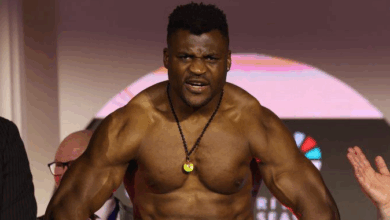When Icons Return: How Wrestling Legends Are Reshaping Today’s WWE Landscape
There was a time when they only lived on the posters of our childhood, sweaty-arena demigods with burning eyes, flying through the air, smashing bodies, carrying the world’s weight on their shoulders. And now? They’re back.
Hulk Hogan, The Rock, Stone Cold, The Undertaker; legends of wrestling we thought only existed in the depths of nostalgia are stepping back into the ring, shaking up the WWE universe as if the last twenty years never happened.
It’s like when a new interactive slot machine appears next to a classic slot game on a Slovak online casino platform: familiar, yet completely different. These legends don’t just fight: they tell stories, building bridges between fathers’ and sons’ fandom. The show doesn’t just come alive; it’s reborn. And with it, the belief returns that there are still heroes who can rewrite the rules.
Why Are WWE Legends Still So Popular?
Because when a legend returns, it’s not just a person stepping into the ring, it’s an entire era. A scent, a mood, a Sunday afternoon from childhood, back when we still believed the world was black and white: the good guys always won, and the bad guys got what they deserved, usually after a well-aimed Big Boot. These comebacks aren’t just hits of nostalgia; they’re time machines, telling today’s youth what myths looked like when they still came on VHS.
Of course, not everyone buys into it. Only 23% of viewers aged 18–24 say they feel emotionally connected to wrestlers from before 2000, not exactly a majority. In fact, 67% feel downright let down when a returning legend’s storyline ends like a piano concert abruptly cut short. But maybe perfection isn’t the point. Maybe it’s about feeling again that something familiar, something old, still lives on. And that it’s different from what’s out there now, raw, powerful, unapologetically old-school American muscle.
Besides, we’re knee-deep in a retro wave anyway. The aesthetics, heroes, and stories of the ’80s and ’90s are back in fashion. And the wrestlers of that era? They’ve become icons once more, not just in the ring, but in the very heart of pop culture.
Wrestling Legends – New Storylines
There are moments when the old lion no longer fights but sits silently in the corner, and every young male gives him a wide berth, knowing exactly what he’s capable of. That’s what these returning legends are like in the world of WWE: they’re not just stepping back into the ring, they’re showing the new blood the way forward.
Take Ric Flair, for example. When he appeared alongside Andrade El Idolo, suddenly every movement carried the weight of half a century’s worth of experience. And in Charlotte Flair’s storyline, he fits like a key in a lock, father and daughter, light and shadow, past and future.
Or look at Shawn Michaels. Today, he’s the creative director of NXT, but who cares about job titles when he appears alongside the likes of Carmelo Hayes or Bron Breakker, and with a single word shifts the entire narrative? His character hasn’t aged out, it’s evolved. He’s become a mentor, a living legend who can still strike a spark when he brushes against the matchstick of a new generation.
Legends Storming the Throne
When a legend doesn’t just return, but lays claim to the throne, something deep stirs beneath the roots of the WWE universe. John Cena, the WWE superstar, the warrior of chained victories, keeps reappearing, this time chasing his 17th world title. He’s not just chasing personal glory; he becomes a mirror for every reigning champion, reflecting who they truly are.
And then there was Lita; one night in 2022, when the Raw Women’s Championship seemed to tremble under its weight as she squared off against Becky Lynch. Her icon status wasn’t just for show, it became a weapon, the living wrestling legend impact, reshaping the program.
And of course, Goldberg. The exploding crowd, the stripped-down promos, the primal intensity. When he goes after a title, the belt’s weight doubles, and everyone starts paying attention. When wrestling legends return, they don’t just shake up storylines, they elevate the very prestige of championship gold.
The Future of Wrestlers Raised in the Arms of the Past
WWE doesn’t just preserve legends, it builds with them. New talents don’t just need opportunity, they need purpose. And what sharper target could there be than the shadow of a legend? Shows like Who Wants It More? Capture exactly that: when a WWE legend returns, the impact ripples across both the roster and the audience. Fans don’t just cheer, they evaluate: “Does this newcomer have what the old guard had?”
But when a returning icon enters the storyline, every movement becomes a lesson. A handshake, a word, a glance; these are where the young ones learn. If Cena bows his head in an interview to honour the rising champion, or a tear slips down a rookie’s face after a hug from Lita, it’s more than theatre, it’s a milestone in a wrestler’s life.
As you can read here, these moments don’t just build character. They carve statues from living flesh, and under the touch of legends, tomorrow’s stars are forged into flesh-and-blood icons.
The Challenges and Criticisms of Relying on Legends
We may cheer with tingling palms when that old entrance music hits and a familiar silhouette strides into the dusty arena, when a wrestling icon returns. But sometimes, returning legends with ‘wrestling legends star power’ don’t bring gifts. They bring weight. Yes, for a moment, that legendary spark reignites, that star power flares up, but what’s left when the flame fades?
There’s a kind of addiction to nostalgia that clings to the return of wrestling icons. That creeping feeling that nothing really happens unless Stone Cold gives a wink or The Rock bellows into a mic. Meanwhile, the younger generation is out there, day in, day out, breaking their bodies, building their personas, yet they’re often reduced to backup players the moment a legend appears. And what does that legend offer in return? Sometimes, just three signature moves and a quick loss, because, physically, many can no longer keep up with what they once did.
Storylines suffer, too. Something gets carefully built over months, only to be rewritten overnight by the sudden arrival of a legacy hero, who vanishes again three weeks later.
Sure, in the short term: hype, ratings, clicks. But in the long run? When will we learn to move forward if we’re always looking back? WWE’s challenge now is not just to honour the past, but to have the courage to boldly build the future.
Two Schools, Two Worlds: Legends Through the Eyes of WWE and AEW
WWE loves it when retro explodes. For them, a legend isn’t just part of the story, they are the story. Like lightning on a clear sky, unexpected wrestling returns strike without warning. When Hulk Hogan, Goldberg, or even The Rock shows up, the past echoes, nostalgia flares, and then fades just as quickly. The goal is spectacle: instant impact, a surge of memories, a spike in viewership. But by the time those emotions settle, the legend has already vanished again into the mist.
AEW, on the other hand, plays a different tune. There, legends aren’t guests, they’re a quiet, constant presence. Sting, for instance, isn’t just a relic of former glory; he fits into ongoing stories, teaches, and guides. Arn Anderson doesn’t merely evoke the past; he is an active character, shaping what happens inside the ring. Nostalgia here isn’t set dressing, it’s raw material, reused, reimagined, and redefined.
Each approach hits differently. WWE ignites a blaze, AEW tends the coals. Neither is better or worse, just different. But the contrast is most felt when the audience doesn’t just want to remember, but to believe that the story unfolding before them is real and alive.
Final Thoughts: The Eternal Promise of a Comeback
Neither WWE nor AEW will ever let go of the power that professional wrestlers bring, because as long as there’s a past, there will be stories to tell. And the future? It’s brimming with potential returns: Randy Orton, Batista, maybe even one last Undertaker appearance, if the rumours are to be believed. But the real question is, should they always come back?
If used wisely, absolutely. To mentor, to build bridges, to sanctify the moment. But if it’s just for the spectacle? That burns out fast.
The point isn’t who returns. It’s how. And what the world, now breathing to a different rhythm than it did twenty years ago, chooses to do with them. Legends shine brightest when they help shape the future, not when they simply replay the past.
And if that’s how it happens, we’ll remember them forever.
Because a legend doesn’t live on just by coming back. A legend lives on when they still have something left to show.



